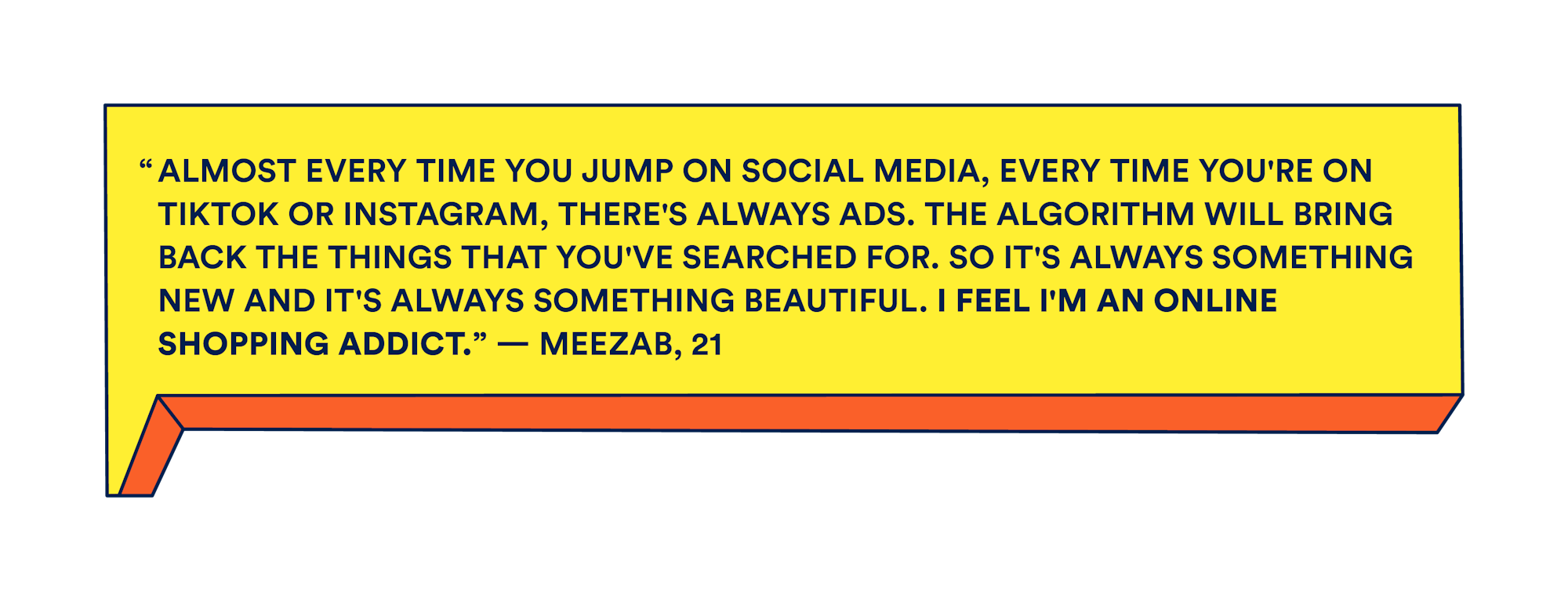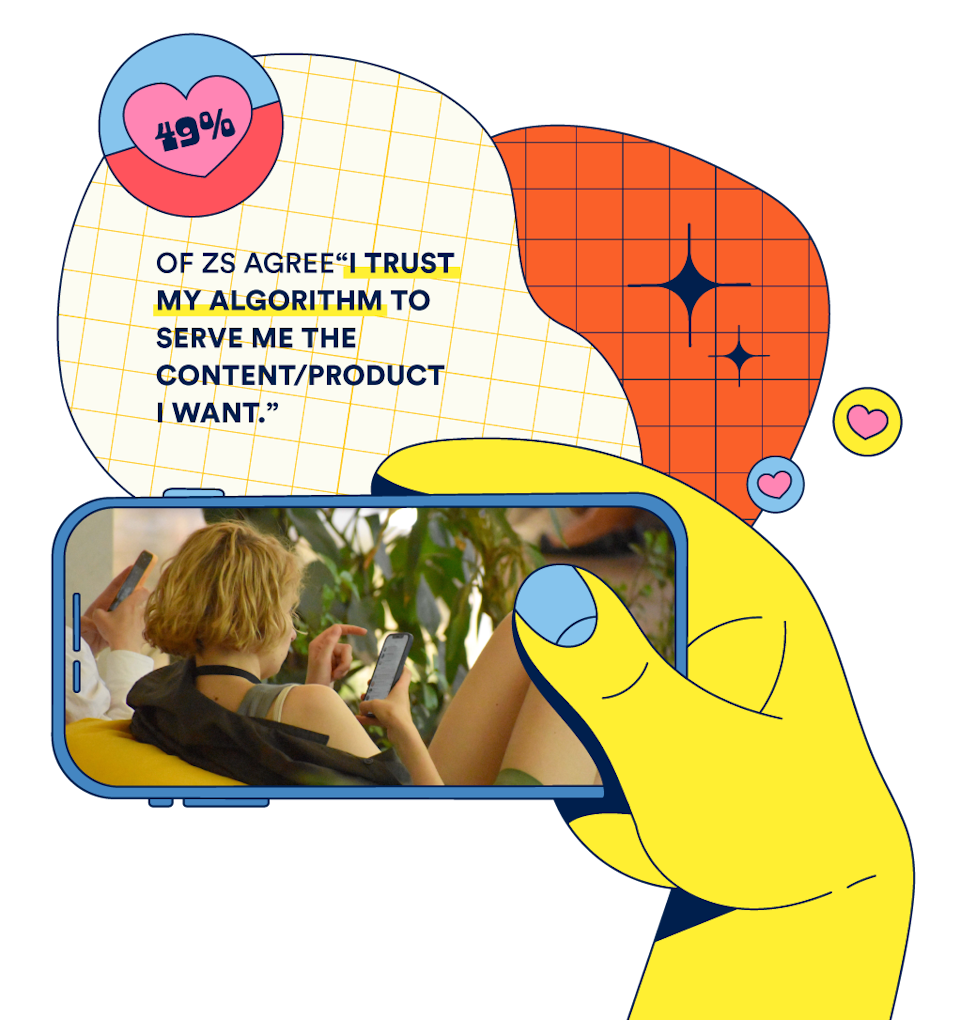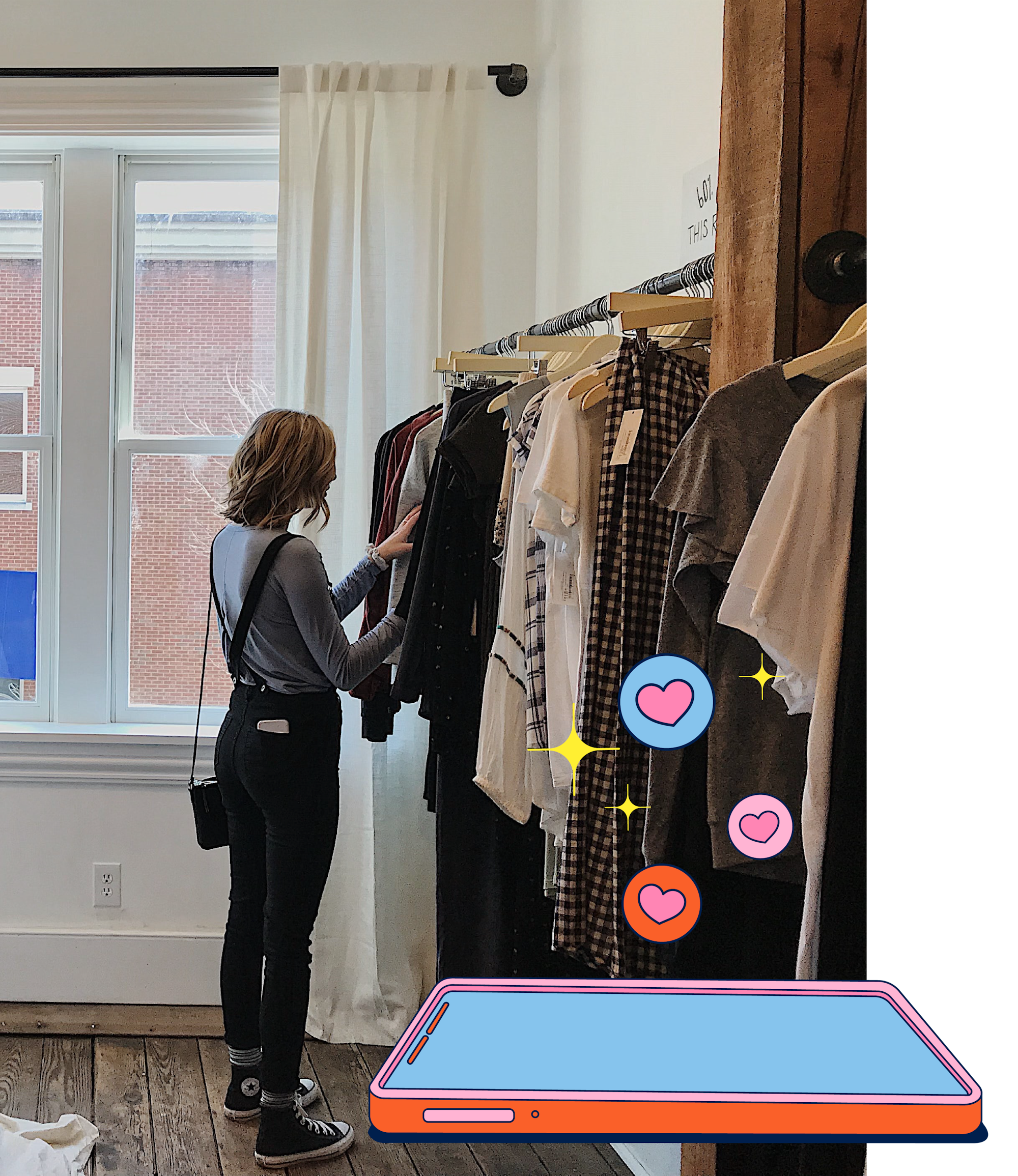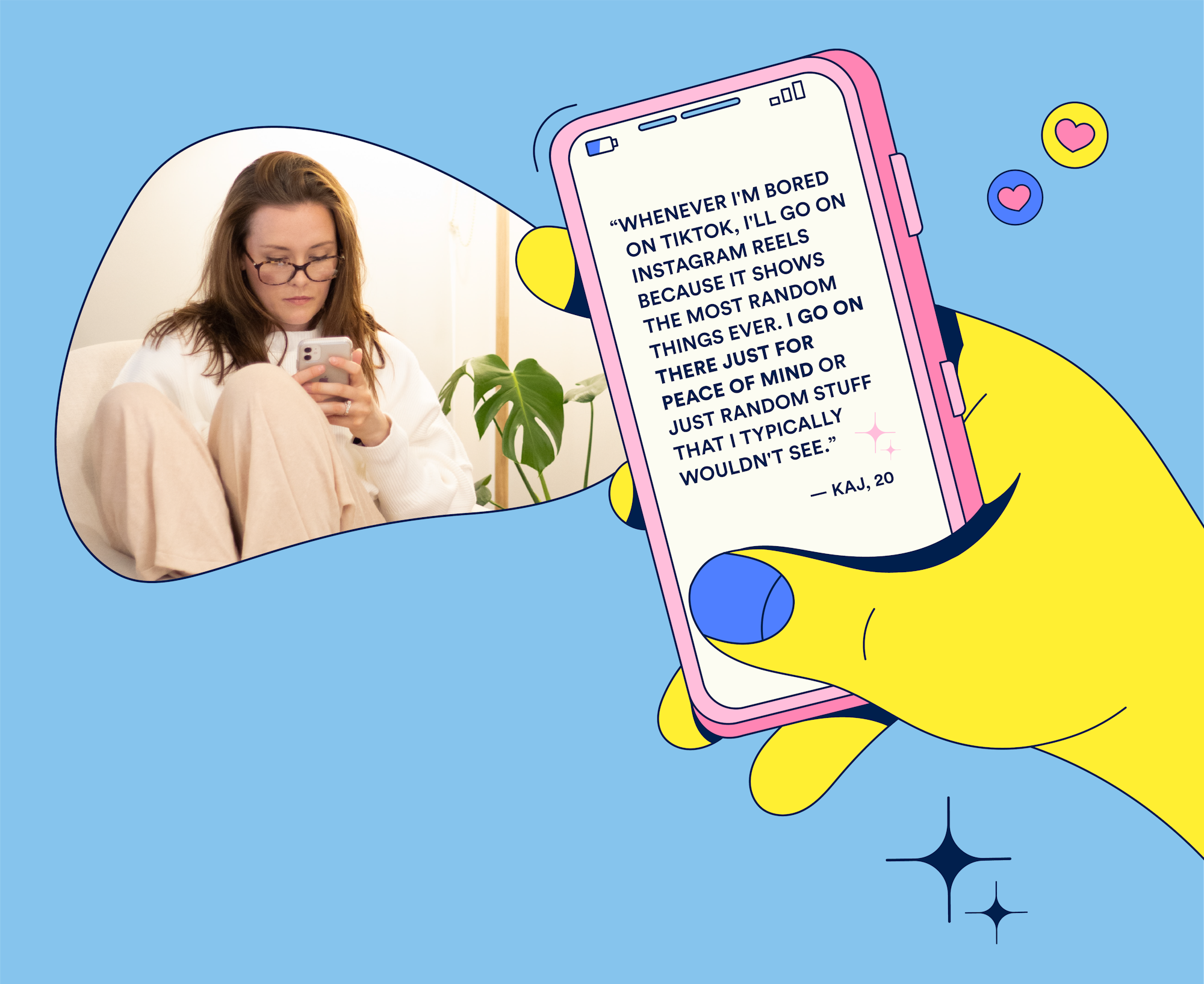
10 Min. Read
Algo Life
In today’s era of TMI, brands no longer have the power to lead Zs down a preordained consumer path. Instead, Zs are letting their algorithms take the wheel and drive their path to discovery. As their engagement with brands becomes increasingly driven by the scroll, Zs have accepted the fact that they’re being influenced — and they’re increasingly taking that influence into their own hands.
GEN OVERWHELM
We all know that Gen Zs are true social media natives, but it’s impossible to emphasize enough just how influential these apps and platforms are in their lives — not to mention their consumer journeys. Every day, this generation is exposed to an avalanche of cultural incoming that reaches them through their screens. More than half (54%) of Zs use social media at least four hours a day — almost double the amount of other U.S. adults (28%) — and 38% of Zs spend more than four hours a day perusing their favorite feeds. Meanwhile, research shows that this generation sees a brand every minute, and 80% of Zs tell Archrival their generation is exposed to more brands and advertising than any other generation.
On the one hand, this makes Zs a generation that is always browsing the virtual aisles — a plus for brands. But there’s pain with the gain: Zs are becoming overloaded and burned out from this content onslaught, and nearly two-thirds (64%) say their generation is more overwhelmed than any other.


ALGO-NOMICS
Zs have found some relief from this overwhelm, though, and it’s come in the form of their trusty algorithms. Serving them only what they want to see (and what they didn’t even know they wanted to see), Zs’ highly personalized feeds have become the be-all, end-all of this gen’s interests — and therefore their purchasing habits, too. It’s a virtuous cycle in selfhood as they build their algorithms through intentional clicks, and their algorithm builds them through content.
This is a massive shift from all other consumers before them; Gen Z is a generation that doesn’t know a world where their path to discovery wasn’t shaped by their algorithms. Zs see their algorithms as an almost shockingly intimate part of themselves: Half of Zs say their algorithm knows their tastes and interests better than their own parents. For this gen, Instagram’s Explore page and TikTok’s For You page (aka FYP) really deliver on their “for you” promise. In fact, Kaj, 20, tells Archrival that his TikTok algorithm is so honed to his passions that “it’s scary” — in a good way, of course. And for Amaria, 22, her FYP is chock-full of the funny videos, true crime deep dives, and fashion tips she craves. “I love that because I need that inspiration in my life,” she says.

Living the Algo Life, Zs can simply open their phones and let the inspiration wash over them — and that means their paths to discovery and engagement have grown progressively outsourced and peer-led. And for the most part, Zs are cool with this state of being. “I’ve only been alive in an age where technology and social media has been around, but it has been really inspiring,” according to Elisa, 18, who says that the content served to her on TikTok has influenced her inside and out, from her OOTDs to her self-care routines to how she spends her money.
For brands, the Algo Life means there’s more competition for eyeballs than ever before. But the algorithm also holds the potential for major opportunity: When asked how they most often discover new brands and products, Zs’ top response is “I’m scrolling through social media and am passively served up recommendations.” In other words, if brands can crack the algorithm, Zs are primed to engage with the marketing it sends their way.


INFLUENCE STATE OF MIND
Though their time on social media may be largely spent scrolling, Zs are far from ignorant to the effect this is having on their lives. Unlike generations before them, Zs are acutely aware that their path to purchase is shaped by outside influence. In fact, “influence” has become both a verb and a state of mind for this gen — and one they believe they can willingly step in and out of. Now, slightly more Zs believe they’re the ones being influenced by other people, rather than being the ones to influence others (54% versus 46%). This is a huge shift in perspective from Millennials, who were the original content creators-slash-influencers. While the older gen sees their consumer preferences as self-determined, Zs have more or less embraced the Algo Life: 44% agree, “I’ve accepted having my behavior influenced by my algorithm as part of modern life.”
FEEDING THE BUBBLE
But the story doesn’t end there. As Zs age up, it’s become crystal clear that this is not a passive generation. Now, when algorithms become a little stale — serving up the same viral content again and again — Zs are taking matters into their own hands. By consciously liking, disliking, saving, and ignoring the content on their feeds, many Zs are training their algorithms to feed them what they want to see and to get rid of what they don’t.

This level of mass customization is hard for most brands to compete with. Elisa, for instance, wants her FYP to churn up gaming content — and is telling it as much. “I haven’t really gotten TikToks on [gaming] so in the rare chance that I do, I force myself to favorite it or like it so that maybe I can train the algorithm to make it return back to my page,” she says. Amaria, meanwhile, did a mass unfollow sweep on Twitter which “1000% helped. [The algorithm] caught on immediately and it weeded out what I didn’t care about in my feed.”
The point here is that there’s a time and a place for the passivity of the Algo Life, so long as Zs have some control over what exactly the algorithm feeds them. After all, Zs are not known for sitting back and letting life happen to them — and that includes their path to discovery. In our next trend, we’ll tell you about the two mindsets fueling this generation’s consumer journey – and how they’re moving seamlessly between scrolling and scrutinizing.

WHAT IT MEANS FOR BRANDS
Gen Zs’ consumer journeys are far more fluid than previous gens, so adjust your brand touchpoints accordingly. While the traditional consumer path had a wide funnel to catch consumers en masse, consumers today each follow their own meandering nonlinear route. Brands must be agile and multifaceted enough to reach consumers in more niche moments.
Optimize Zs’ algorithms. When Gen Z consumers are searching out a new brand or product, their hunt often starts with the scroll (e.g. letting the algorithm serve it up to them). Brands today need to be savvy at utilizing meme culture, SEO, influencers, and the like, to ensure they appear in moments of discovery.
Swap brand control for brand community. In the old world, brands were at the center of the consumer journey — today, people are. Embrace more fluid human-powered marketing systems; think networks of different types of people who create and collab in ways that resonate with Zs’ algos.

